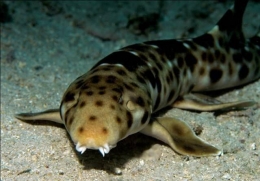Tube-nosed fruit bat This tube-nosed fruit bat (Nyctimene sp.) from Papua New Guinea's Muller Range does not yet have a name but has been found in other parts of New Guinea. It is probably restricted to hill forests on the island. The bat was observed by RAP researchers in 2009.(Piotr Naskrecki)
On they 20th anniversary of field study, Conservation International’s “Rapid Assessment Program” has named the top 20 RAP’s of the program history, which many of them came from Papua Island. These species are “some of most biologically unique, surprising, or threatened discovery.”
Pada mereka memperingati 20 tahun studi lapangan, Conservation International "Rapid Assessment Program" telah menamai Topa 20 RAP dalam sejarahprogram, yang banyak dari mereka berasal dari daerah kepulauan. Papua. Spesies ini adalah "beberapa yang secara biologispaling unik, mengejutkan, ataupenemuan mencekam."

Did you know out of 1.9 million species have been documented, and yet another 30 million still waiting to be discover and scientifically described? Because many disappeared before scientist discover, which known as Centilan extinction.
Smoky honeyeater A new species of smoky honeyeater (Melipotes carolae) was found in 2005 during a RAP expedition to the Foja Mountains of Indonesia's Papua province on the island of New Guinea.(Bruce Beeler)
Russ Mittermeier, Conservation International President, say, “We have truly laid the groundwork for future and create contingencies that already carrying the cause of conservation forward.
Here some of the picture of RAP’s Stars in the animal world that came from Papua Island.”
Russ Mittermeier, Presiden Conservation International, mengatakan, "Kami benar-benar telah meletakkan dasar bagi masa depan dan menciptakan kontinjensi yang sudah tercatat penyebab konservasi ke depan.
Berikut beberapa foto dari RAP's Stars di dunia hewan yang berasal dari kepulauan Papua. "


Pinocchio frog
This frog (Litoria sp. nov.) was discovered during a RAP expedition to the Foja Mountains of Indonesia's Papua province in 2008. The frog has a long, Pinocchio-like protuberance on its nose that points upward when the male is calling but deflates and points downward when he is less active. Its discovery was a happy accident: Herpetologist Paul Oliver spotted it sitting on a bag of rice in the campsite.(Tim Laman)
by Conservation International,msnbcJackSoetopo













